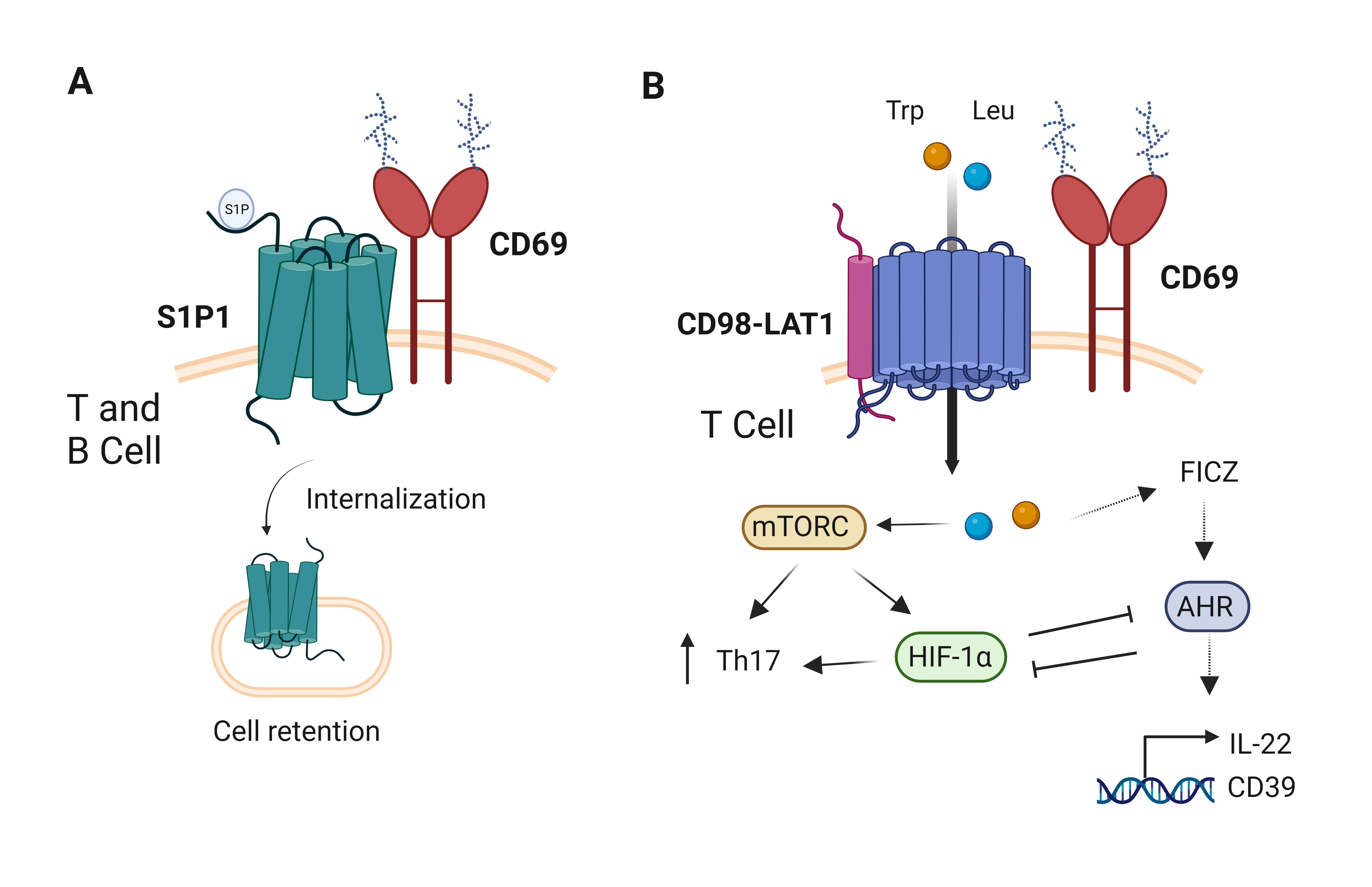Unraveling CD69 signaling pathways, ligands and laterally associated molecules
DOI:
https://doi.org/10.17179/excli2023-5751Keywords:
CD69, CD69-ligands, CD69-signaling, molecular signaling-pathwayAbstract
CD69 is an early leukocyte activation marker involved in the regulation of the immune response. Initial in vitro studies evaluated its function using monoclonal antibodies until knock-out mice were developed. Subsequently, four ligands for CD69 have been identified, namely galectin-1, S100A8/S100A9 complex, myosin light chains 9 and 12, and oxidized low-density lipoproteins. In addition, several molecules are laterally associated with and regulated by CD69, including calreticulin and two transmembrane receptors, sphingosine-1-phosphate receptor (S1P1) and the heterodimeric amino acid transporter complex SLC7A5-SLC3A2 (LAT1-CD98). Recently, CD69 engagement has been shown to induce the expression of the immunoregulatory receptor programmed cell death-1 (PD-1) in T cells. The molecular signaling induced by CD69 has been explored in different scenarios and cell types. This review provides a perspective on the molecular pathways, ligands and cellular functions known to be regulated by CD69.

Downloads
Published
How to Cite
License
Copyright (c) 2023 Maria Jimenez-Fernandez, Hortensia de la Fuente, Pilar Martin, Danay Cibrián, Francisco Sánchez-Madrid

This work is licensed under a Creative Commons Attribution 4.0 International License.
Authors who publish in this journal agree to the following terms:
- The authors keep the copyright and grant the journal the right of first publication under the terms of the Creative Commons Attribution license, CC BY 4.0. This licencse permits unrestricted use, distribution and reproduction in any medium, provided that the original work is properly cited.
- The use of general descriptive names, trade names, trademarks, and so forth in this publication, even if not specifically identified, does not imply that these names are not protected by the relevant laws and regulations.
- Because the advice and information in this journal are believed to be true and accurate at the time of publication, neither the authors, the editors, nor the publisher accept any legal responsibility for any errors or omissions presented in the publication. The publisher makes no guarantee, express or implied, with respect to the material contained herein.
- The authors can enter into additional contracts for the non-exclusive distribution of the journal's published version by citing the initial publication in this journal (e.g. publishing in an institutional repository or in a book).





